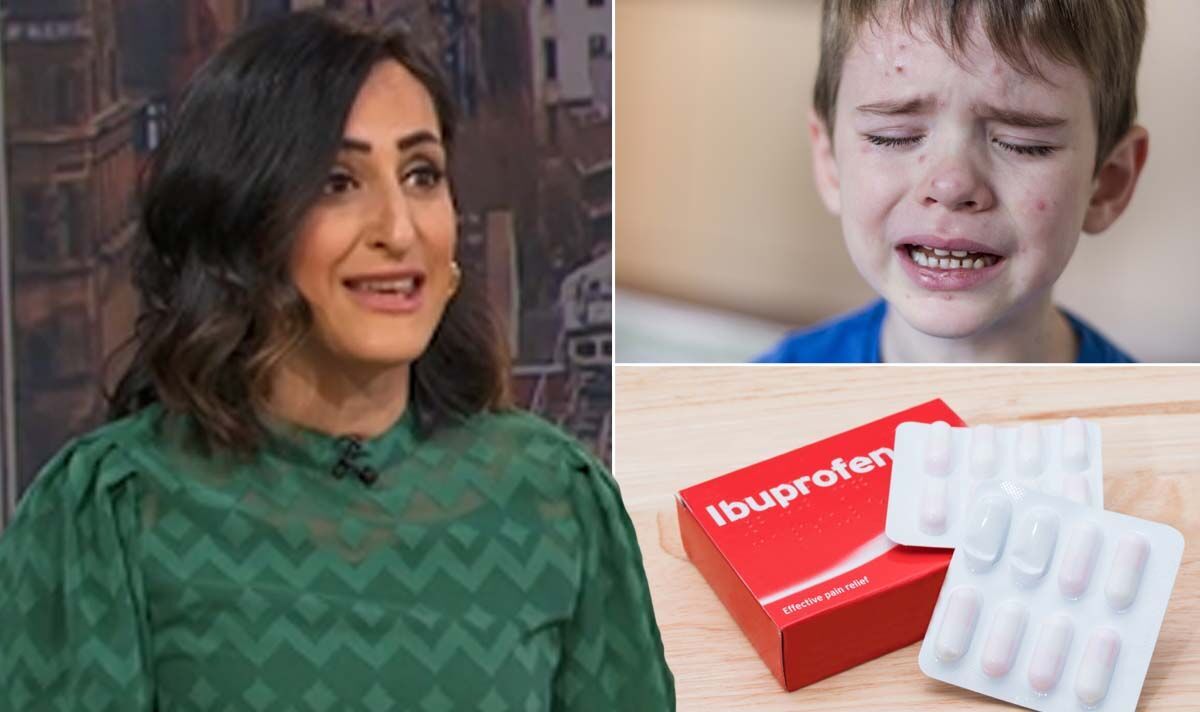Chicken Pox: Dr Punam advises against using ibuprofen
We use your sign-up to provide content in ways you’ve consented to and to improve our understanding of you. This may include adverts from us and 3rd parties based on our understanding. You can unsubscribe at any time. More info
Speaking on BBC’s Morning Live, the NHS GP explained that we’re currently seeing outbreaks of the “very contagious” virus. When it comes to the treatment of the stubborn symptoms, the doctor urged parents not to reach for ibuprofen as it can “cause complications”.
Dr Punam warned that the UK is currently in a high season for chickenpox as there are more cases being recorded among children.
She said: “We tend to see more of it in spring, summer months.
“And the reason for that is restrictions are lifting, kids are mingling more, and the virus likes warm environments as well.”
For parents who are trying to ease their children’s symptoms, she offered plenty of tips but also issued a warning.

When you want to tackle symptoms like pain and fever, the doctor said to opt for paracetamol and not ibuprofen.
She urged: “Don’t be giving ibuprofen – that can actually cause more complications.”
The Morning Live presenter Kimberley Walsh responded by saying: I heard that. And I was a bit terrified, actually, because it’s not readily available information.”
Dr Punam added: “Yeah, and it’s the go-to for parents. She added it’s “really important” to follow this warning against the popular painkiller.
Even the NHS advises against the particular pain relief. It states: “Do not use ibuprofen unless advised to do so by a doctor, as it may cause serious skin infections.”
In fact, several studies have shown that ibuprofen and other anti-inflammatory drugs (NSAIDs) can exacerbate the symptoms.
For example, The British Medical Journal reports that the use of NSAIDs can lead to necrotising fasciitis in those with chicken pox.
Dubbed as the “flesh-eating disease”, necrotising fasciitis describes a serious bacterial infection that affects the tissue beneath your skin and surrounding muscles and organs.
Source: Read Full Article
